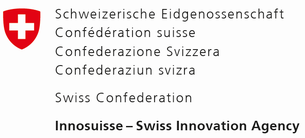Neurotune - Clinical results
Schlieren (Zurich), Switzerland, 21 October 2010 Neurotune AG, a Swiss biopharmaceutical company, today announced positive top-line results from its phase IIa, safety and tolerability, study of dimiracetam (NT-11624), its lead compound for treatment-induced neuropathic pain in HIV patients receiving anti-retroviral medication. There is a major medical need for better neuropathic pain treatments as the current medications fail to achieve satisfactory pain relief and have severe side effects. The eight week randomized, double-blind, placebo-controlled, parallel group trial enrolled 116 patients at six sites in South Africa and was designed to assess the safety, tolerability, and exploratory efficacy of dimiracetam in patients under polytherapy for HIV. A side effect of such drugs is painful distal peripheral neuropathy (damage to the nerves). The Visual Analogue Scale (VAS) and the Total Symptom Score (TSS) were the main tools used to assess the improvement in symptoms after treatment, from baseline to week eight. Dimiracetam was given twice daily, starting at a dose of 400 mg and, contingent on tolerability, doubling to 800 mg b.i.d. for two weeks and then 1600 mg b.i.d. for four weeks. Safety Dimiracetam was shown to be safe and well tolerated, with 116 patients randomised in the study and 111 patients who reached and maintained the highest dose to the end of the study with no safety concerns. Five patients discontinued the treatment, none of them for treatment-related reasons. Patient’s general health conditions (as assessed by the Clinical Global Impression) and the severity of their AIDS (assessed by the viral load and the CD4+ count) were the same in both study groups. Efficacy There was a considerable improvement in pain symptoms at each increasing dose and at the end of the study the entire patient population had significantly greater pain relief than they had at the start. There was a very high placebo effect and a compliance failure in a proportion of patients, which prevented the initial assessment of efficacy. However, post hoc analysis showed that during treatment with the highest dose, patients with adequate blood levels of dimiracetam had significantly greater pain relief, as measured by TSS and a trend toward significance in the VAS compared to those patients with suboptimal blood levels. The results support the further development of the compound and the Company is planning a pivotal phase II trial of the drug in HIV. The full data will be presented at a future scientific symposium. Commenting on the results Ruggero G. Fariello, Neurotune’s Chief Medical Officer, said: “This data is extremely valuable, dimiracetam has demonstrated excellent safety in a patient population receiving multiple treatments and known for their frailty and susceptibility to multiple complications. In addition, we have obtained very useful efficacy data; despite the fact the study was specifically geared to assess tolerability. We have also gained a good insight on the proper design for the forthcoming efficacy study.” “This is an important milestone in the clinical development of Neurotune’s lead compound in the acetam series. Neuropathic pain is a frequent side effect of the HIV infection, and the antiretroviral medications to treat it, affecting approximately 500,000 patients in the United States and Europe. The solid experimental evidence for dimiracetam has shown unmatched relief in various forms of neuropathic pain without any of the common side effects associated with other pain medications such as dizziness, somnolence or cognitive disturbance. We look forward to further developing the compound in a pivotal phase II trial and are actively looking for financial or pharmaceutical partners.” said Bruno Oesch PhD, Neurotune’s CEO. About dimiracetam Glutamate is the main mediator of excitation in the Nervous System; an overdrive of the glutamatergic systems has been implicated in a wide variety of NS diseases including epilepsy, stroke, pain, trauma and neurodegenerative disorders. Overdrive of one of the glutamate receptors, the NMDA-receptor plays a major pathogenic role in these conditions. Most unselective NMDA-R antagonists developed in the past to treat these disorders failed in clinical trials because of unacceptable side effects (e.g. hallucinations, psychosis, memory and motor deficits). Dimiracetam appears to be a novel class of subtype-selective NMDAR antagonists which has a much improved side effect profile compared with broad-spectrum antagonists. It has shown excellent efficacy in several animal models of pain with outstanding superiority in respect to standard anti-neuropathic agents. Results have also shown that high doses of dimiracetam do not affect cognition and alertness. About Neuropathic Pain Neuropathic pain is a type of chronic pain. It is a result of damage to the nervous system following infection, disease, injury, and certain medications. Neuropathic pain serves no protective function. Instead of functioning properly to warn of tissue injury, the nervous system malfunctions and becomes the cause of the pain. Neuropathic pain can continue for months or years and is often described as "burning," "electric," "tingling," or "shooting."























































Please login or sign up to comment.
Commenting guidelines